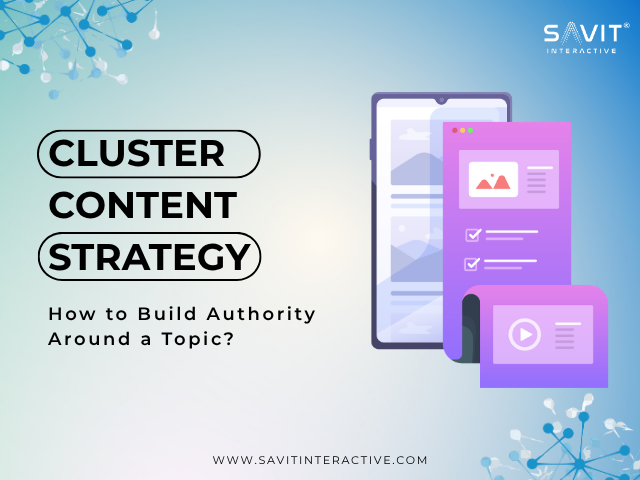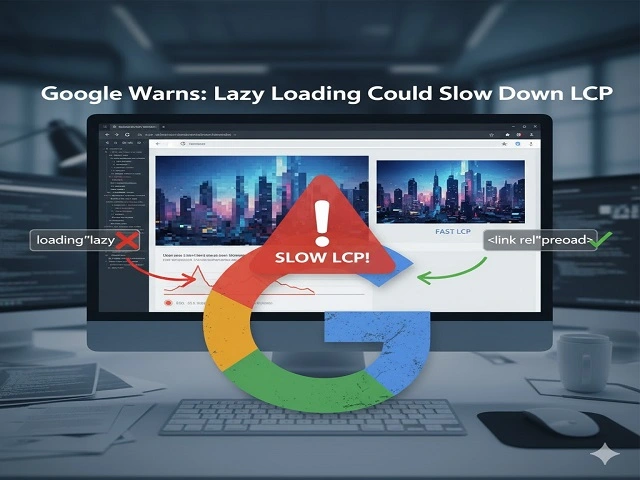Build deeper authority and drive better traffic by structuring your content with topic clusters.
Google no longer rewards scattered content. It emphasizes the importance of structure, which is precisely where a cluster content strategy comes into play.
If your website has a mix of blogs, case studies, and service pages floating around like unlinked islands, you’re not just losing SEO points you’re confusing both users and search engines. A topic cluster model aligns your content with how people search today, and more importantly, how Google understands content relevance.
Let’s break down what a cluster strategy is, why it’s the future of seo content hubs, and how you can actually start building topical authority that ranks.
What Is a Cluster Content Strategy?
At its core, a cluster content strategy is a way of organizing your website content around a central theme or pillar topic.
You start by creating a comprehensive pillar page, a long-form, high-value piece of content that covers a broad topic in depth. Then, you build multiple supporting blogs or content pages around subtopics related to that pillar. Each of those subtopics links back to the pillar page and vice versa.
This internal linking structure tells Google:
“Hey, this site knows a LOT about this topic. It’s not just surface-level — it’s a complete resource.”
Why Topic Clusters Work in SEO
Google’s algorithm updates, like BERT and Helpful Content Update, are all aimed at better understanding context, depth, and semantic relevance. Keyword stuffing no longer holds relevance.
Today, it’s about proving your topical expertise, and that’s where topic clusters seo plays a pivotal role.
Here’s what a good cluster model achieves:
- Better Rankings: Search engines reward interconnected, in-depth content
- Improved Crawlability: Internal linking helps Google navigate and index better
- Stronger User Experience: Visitors find content in a logical flow
- Higher Dwell Time: Multiple related reads = more time on site
Components of an SEO Topic Cluster
To build a functional and high-performing seo content hub, you’ll need:
1. Pillar Page
At the heart of your cluster lies a comprehensive evergreen content piece that should exceed 2000 words, thoroughly addressing the main topic.
Example: “Complete Guide to Local SEO” Linked subtopics: Google Business Profile, Reviews, NAP Consistency, etc.
2. Cluster Pages (Support Blogs)
These are shorter blog posts or pages that explore individual subtopics in depth. They should be hyper-focused and provide actionable insights.
Strategies for Enhancing Google My Business for Local SEO
3. Internal Links
This is glue. Each cluster page ought to link to the pillar, while the pillar should, in turn, reference all associated clusters. This forms a tight, semantic relationship that makes it easy for Google to crawl.
Identifying Suitable Topics for Clustering
Let’s say you’re in digital marketing. You don’t want to write 10 random blogs about SEO, social media, or PPC.
Instead, you could build a hub like this:
Pillar Topic: Social Media Strategy for Brands Cluster Pages:
- Creating a Monthly Content Calendar
- Choosing the Right Platform for Your Audience
- How Hashtags Influence Reach
- Paid vs Organic Social: What Works?
Tools like SEMrush, Ahrefs, or Google Search Console can help identify keyword gaps and user queries. These insights allow you to customize your cluster content strategy based on the genuine interests of your audience.
Best Practices to Execute a Cluster Strategy
Do Keyword Mapping
Each cluster page must focus on a distinct long-tail keyword that enhances the main pillar keyword.
Focus on Content Quality
Topical authority is earned by solving problems, not fluff.
Refresh Pillar Pages Regularly
Keep them up-to-date. As trends change, so too must your content.
Use Clear Anchor Text
When linking between pages, use relevant, specific phrases — avoid “click here.”

Measuring the Impact of Your Topic Cluster
Here’s what to track once your seo content hub goes live:
- Growth in organic traffic to cluster and pillar pages
- Improvement in keyword rankings for your target topics
- Rise in time spent per session (indicates content depth value)
- Decrease in bounce rate (thanks to interlinked reading flow)
- Number of backlinks gained to pillar content
Over time, the synergy created between your clusters will act like a gravitational force, pulling in both users and search engines.
Cluster Strategy in Action: A Quick Scenario
Picture a company that provides a Software as a Service (SaaS) platform tailored for effective project management.
Old way: Random blog posts like “Best Chrome Extensions” or “Office Productivity Hacks”.
Cluster way:
- Pillar: “Project Management for Remote Teams”
- Clusters:
- Top Features Remote Teams Need
- How to Run Weekly Stand-Ups Virtually
- Task Automation for Remote Productivity
- Integrating Slack with Your PM Tool
With this structure, you’re not just targeting more keywords, you’re dominating an entire space.
Topic clusters aren’t just an SEO trick – they’re a long-term strategy for building topical authority and content depth. When executed correctly, they create a web of value that search engines can clearly interpret, and that users can easily engage with.
At Savit Interactive, we help businesses go beyond scattered blogs and build content ecosystems that rank, convert, and lead. No matter if you’re beginning anew or fine-tuning your content strategy, we are dedicated to establishing your brand as the trusted expert in Google’s eyes.



